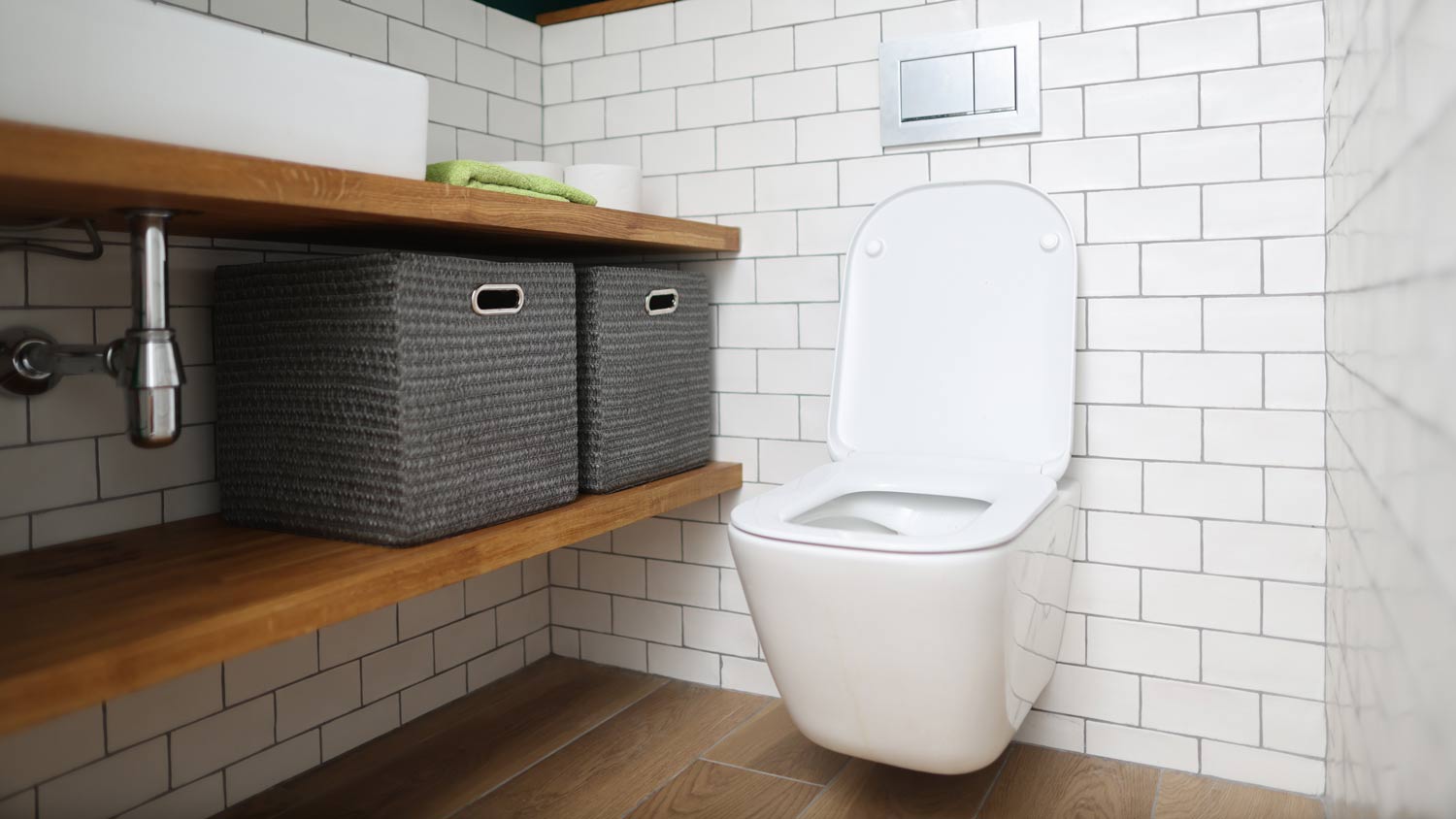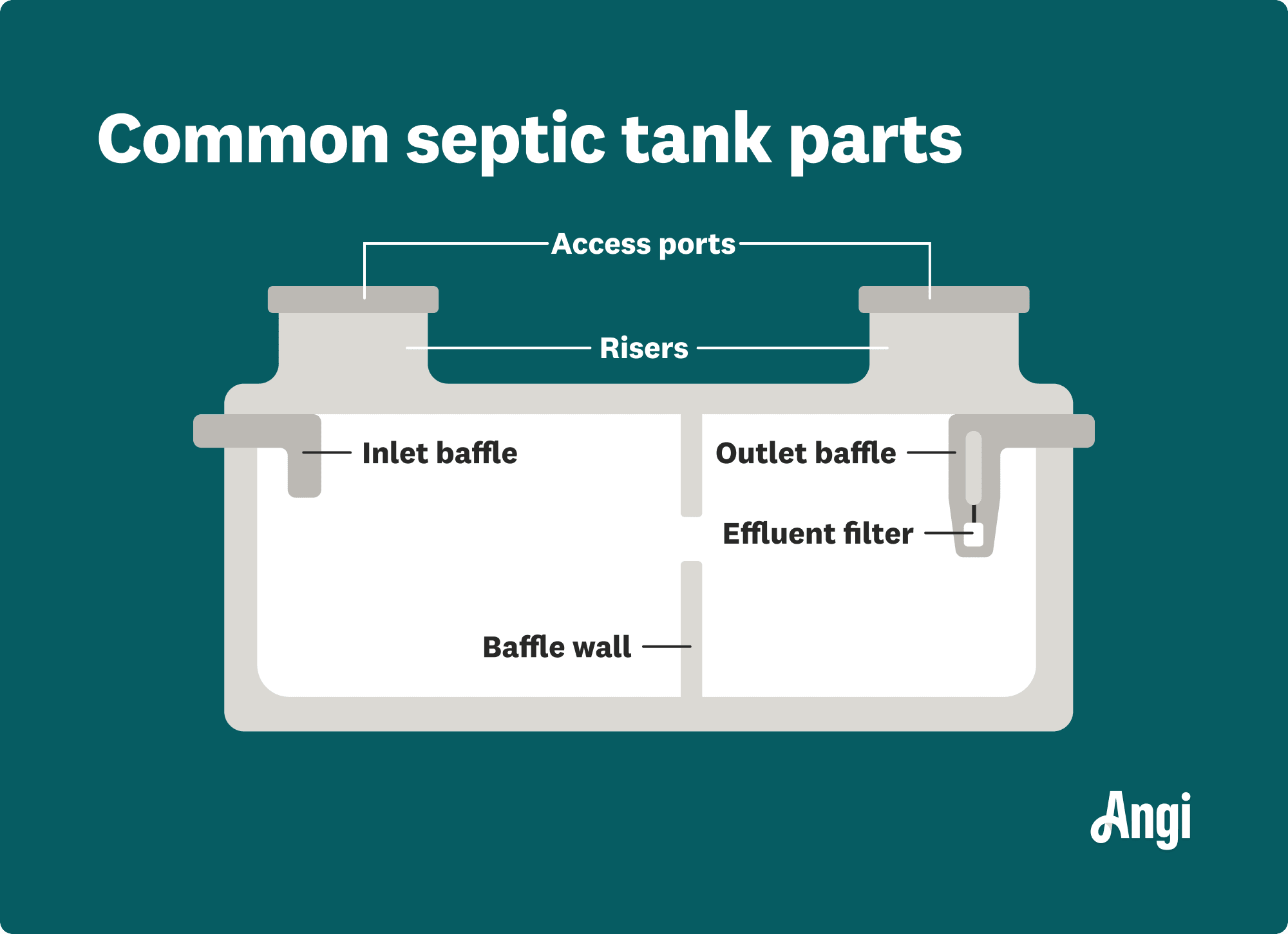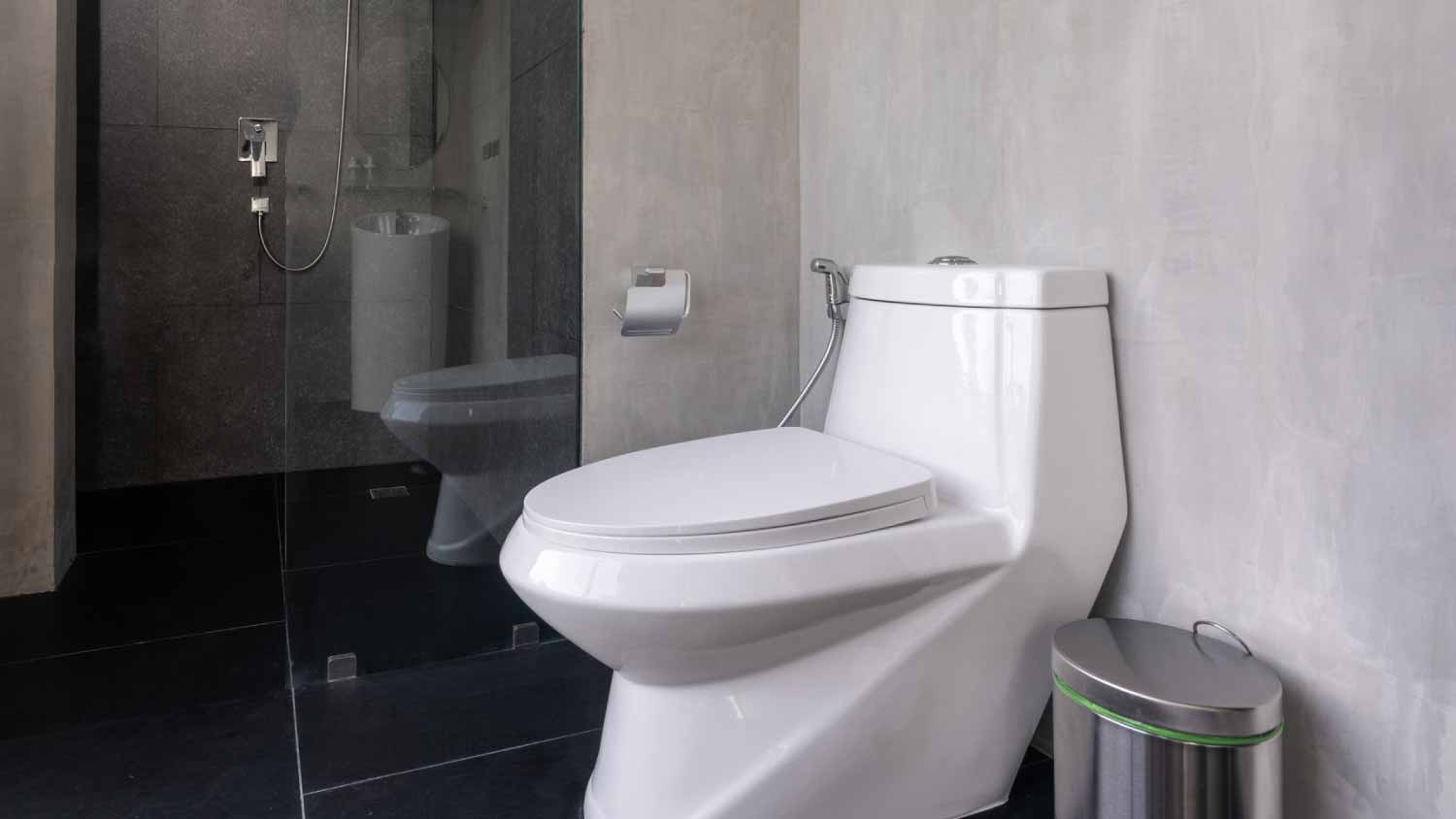
Need to know what sewer line replacement costs in St. Louis, MO? This guide will help you prepare to budget for sewer line replacement done by local contractors.
Septic tank repair costs $1,834 on average, but the price can vary from $629 to $3,039 depending on the type of repair, tank size, permits, and more.


Septic tank lid, baffle, filter, and pump repairs are the most affordable, and a tank replacement is the most expensive.
The type of septic system you have affects the complexity of the repair. Anaerobic septic systems are the simplest and most affordable to repair.
Most of your money will go toward labor, so the cost of living and the going rate for labor in your area are important factors to consider.
Budget for routine inspections so that you can catch issues before they become severe.
The average septic tank repair costs between $629 and $3,039, and the average is $1,834 for the inspection and repairs. A basic inspection and small repairs, like fixing the lid or filters, will be closer to the lower end of the range. Major repairs, including replacing a septic pump or the septic tank lines, will cost more.
Septic tanks hold solid waste and wastewater, separating it so the wastewater can be filtered and dispersed into soil in the leach field behind your home. So when there’s a leaky pipe and an overly full septic tank or other issues, you’ll need to address them quickly. Otherwise, you could be dealing with a smelly and expensive mess.
While people are likely to pay for repairs based on what exact repairs are needed, you may also see varying septic tank repair costs based on the type of septic system you have or the size of your tank or leach field. Septic tank repairs aren’t DIY-friendly, so you’ll want to consider the cost of not just materials but also labor, and these repairs often require permits that will add to the total cost.
As a repeat customer, I can say that Billy never fails to deliver great customer service at a great price. He is honest and knowledgeable. We had an issue with our sewage exit drain pipe after record rain. He diagnosed the problem and fixed it. After the hole was dug he also noticed what could be another issue and upon further uncovering, he was 100% correct. Our pipe was semi disconnected just a bit further down the line. Taking care of that problem too while the hole was open saved us money and headaches! Our system is up and running well and the price was more than fair. If you want an honest, knowledgeable contractor, hire Amos!
There are different types of septic systems to suit varying property types. So if your system is worse for wear, you may spend more to replace certain septic systems, like mound systems or aerobic treatment units, compared to conventional anaerobic septic systems.
| System Type | Average Cost for Replacement |
|---|---|
| Anaerobic | $3,000–$8,000 |
| ATUs/aerobic | $10,000–$20,000 |
| Mound | $10,000–$20,000 |
| Chamber | $5,000–$12,000 |
| Sand filter | $7,000–$18,000 |
| Drip | $8,000–$18,000 |
| Built wetland | $5,000–$12,000 |
| Evapotranspiration | $10,000–$15,000 |
Septic tanks are usually made from plastic, concrete, or fiberglass, and the type of material can impact repair and replacement costs. Plastic is usually the least expensive, with repairs starting at around $150 and new tanks costing around $500 to $2,000. Fiberglass is usually the most expensive, with repairs starting at $750 and new tanks coming in around $1,200 to $7,500, not including labor.
| Material | Average Cost for Repairs |
|---|---|
| Plastic | $150–$2,000 |
| Concrete | $700–$5,000 |
| Fiberglass | $750–$7,500 |
The size of the septic tank and system can influence repair costs, as a bigger system requires more time and materials to fix or replace. An average three- to four-bedroom home spanning 2,000 to 2,500 square feet needs a tank with a capacity of about 1,250 gallons, and this size tank will cost about $1,500 to $4,000 to repair, including parts and labor.
Septic systems contain toxic sewer gasses and raw sewage, so repairs need to be left to licensed pros with the right equipment to get the job done safely. You’ll most likely be charged a total project rate rather than seeing the cost broken down into parts and labor. However, if you are charged hourly, expect to spend about $125 to $250 per hour.
Because improperly installed or repaired septic systems can harm the local environment, particularly waterways, you’ll likely need to secure permits before beginning your project. Building permit costs range from around $460 to $2,770 on average for septic system replacement, or you may spend around $20 to $50 for smaller repairs.

Your total cost for repairing your septic tank will also depend heavily on the kind of work your septic system needs to get it back into prime operating condition.
| Repair Type | Average Cost |
|---|---|
| Inspection | $100–$1,175 |
| Lid | $150–$500 |
| Baffles | $300–$900 |
| Filter | $200–$300 |
| Pump | $250–$1,000 |
| Line | $1,000–$4,200 |
| New tank | $3,000–$9,500 |
You can expect to pay as little as $100 to $200 to get an experienced septic pro to come out and thoroughly inspect every major element of your septic system. That includes the tank, the pipes leading to the tank, the pump, and the drainfield. However, you’ll pay $250 to $1,175 for the cost of a sewer camera inspection, which is more advanced than a standard inspection.
Scheduling regular septic system maintenance helps you spot initial indications of damage or future problems, preventing expensive repair work and lengthy household disruptions. Regular maintenance visits cost $300 to $500.
Pumping your septic tank every three to five years is one of the most important septic maintenance tasks. When you combine that with flushing only approved items (toilet paper and waste) and avoiding driving over your drain field, you have a recipe for a long-lasting septic system.
Repairing a septic tank lid costs $150 to $500. If the lid is cracked or can’t close properly, it can let excess water and debris into the tank, which can overwhelm the septic system. It can also allow toxic sewer gas to leak out into your yard.
Baffles cost $300 to $900 to replace. They’re the inlet and outlet pipes to and from the septic tank. Wastewater from your home goes through the inlet baffle to the tank for filtering. Then, the filtered wastewater exits through the outlet baffle and goes to the leach field for treatment.
At a cost of $200 to $300, a new filter can help eliminate the risk of a backup or clog before it becomes a more serious issue and a budget-breaking repair.
Septic pump repairs cost $250 to $400 on average, and you’ll pay $1,000 or more to replace them. Common pump problems involve the electrical system that makes it run and its controls. It’s important to use a septic pro who has experience in repairing pumps in order to prevent damage to yourself, your septic system, or your property.
Your septic system’s pipes provide the crucial link between your home and the septic tank itself, as well as between the tank and the leach field. If some part of the septic line fails, leaks, or breaks, you’ll pay $1,500 on average to repair it. For a new line, the price can range from $1,000 to $4,200, or $50 to $250 per linear foot.
When the tank itself fails or reaches the end of its life, expect to pay between $3,000 and $9,500 to replace it. Approximately $600 to $4,000 is the average cost for the tank itself, with another $500 to $1,000 covering the materials (topsoil, fill, gravel, and stone) needed to fix the tank firmly in the ground and keep it stable.
The average and range of costs for septic tank repairs vary widely across the nation, depending on your location. Average repair costs alone range from a low of $800 in Texas to a high of $6,300 in California.
| Location | Average Cost | Average Range |
|---|---|---|
| Long Beach, California | $6,300 | $2,100–$11,500 |
| Denver, Colorado | $1,600 | $800–$3,000 |
| St. Louis, Missouri | $3,200 | $1,700–$4,700 |
| Ann Arbor, Michigan | $1,000 | $600–$1,500 |
| New York City, New York | $2,400 | $600–$1,500 |
| Boston, Massachusetts | $3,000 | $900–$5,000 |
| Raleigh, North Carolina | $1,600 | $900–$2,700 |
| Dallas, Texas | $800 | $400–$1,300 |
Unless you have prior experience, you shouldn’t try to fix your own septic tank. If you make a mistake, you could end up with polluted water or sewage backing up into your house or yard—which can make you and your family sick.
Hand this project over to a local septic tank repair pro to reduce the risk of damaging your septic system and needing more expensive repairs down the line.
Fixing a broken septic tank is best left to the pros for the following reasons:
Depending on where you live, you may need a license to work on septic systems.
Experienced pros know which permits you’ll need for your project (and how to secure them).
Experts have the skills and knowledge to complete the job more efficiently than DIYers.
Professionals recognize the environmental and health hazards posed by damaged or improperly installed septic systems (and know how to minimize these risks while working).
If you’re inexperienced, you could accidentally put your home’s wastewater system out of commission and end up with a larger repair bill.
Licensed septic tank businesses have insurance and offer warranties on their work.
Repairing a septic tank isn’t a DIY-friendly job, but there are some things you can prepare for a pro’s visit, such as:
Cleaning up your yard to provide clear access to the septic tank
Making sure there’s enough space for the pros to park and bring in their equipment
Letting your pro know about previous issues you’ve had with your septic system
Larger septic tank repair jobs can put a dent in your home maintenance budget. To reduce your costs over time, consider the following strategies:
Call a local septic tank company to clean the tank regularly.
Ask your septic pro about adding septic tank treatments to help the natural bacteria.
Pump the tank every three to five years.
Use less water by installing high-efficiency appliances.
Make sure all drains are pointing away from the leach field.
Ask your septic tank pro about the project timeline, so you can prepare to be home while they work.
Consult your pro about whether it’s better to repair the septic tank or replace it based on the type of damage and its age.
If you don’t already know, ask your pro what caused the damage to your septic tank and what you can do to prevent similar issues in the future.
Prepare your pro ahead of the appointment if your septic tank is in a location that’s difficult to access.
Home is the most important place on earth, which is why Angi has helped more than 150 million homeowners transform their houses into homes they adore. To help homeowners with their next project, Angi provides readers with the most accurate cost data and upholds strict editorial standards. We’ve surveyed thousands of real Angi customers about their project costs to develop the pricing data you see, so you can make the best decisions for you and your home. We pair this data with research from reputable sources, including the U.S. Bureau of Labor Statistics, academic journals, market studies, and interviews with industry experts—all to ensure our prices reflect real-world projects.
Want to help us improve our cost data? Send us a recent project quote to [email protected]. Quotes and personal information will not be shared publicly.
From average costs to expert advice, get all the answers you need to get your job done.

Need to know what sewer line replacement costs in St. Louis, MO? This guide will help you prepare to budget for sewer line replacement done by local contractors.

Need to know what sewer line replacement costs in Baltimore, MD? This guide will help you prepare to budget for sewer line replacement done by local contractors.

Need to know what sewer line replacement costs in Washington, D.C.? This guide will help you prepare to budget for sewer line replacement done by local contractors.

A clogged main sewer line can lead to sewage leaks in your yard or home. Look for these eight signs of a clogged septic line to fix this problem ASAP.

A clogged septic tank can wreak havoc on your home and property. Learn how to unclog a septic tank yourself and know when to call in the pros.

Gurgling, slow drains could mean a main sewer line clog, which can be messy and smelly. Learn how to clear a main sewer line clog yourself with this guide.